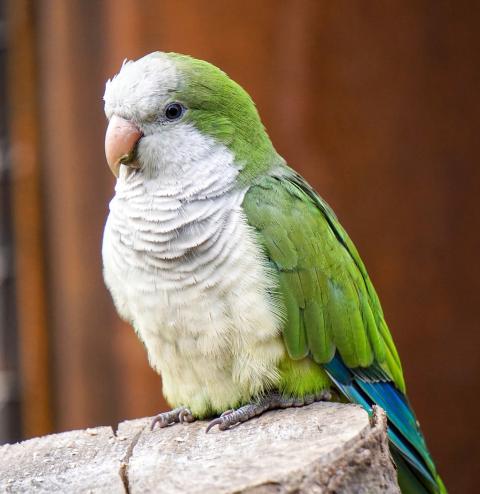Smart Guide to Choosing the Best Large Hamster Cage for Happy Pets in 2025
Creating a joyful environment for your pet hamster is pivotal to their well-being, and choosing the right large hamster cage is one of the most important decisions you'll make as a hamster owner. In this guide, we delve into everything you need to know about selecting the perfect hamster habitat that suits your furry friend’s needs, enhances their health, and sparks their curiosity.
Understanding Hamster Cage Size
When considering a hamster cage size, the primary factor to remember is that hamsters require ample space to roam, explore, and exercise. Ideally, a spacious hamster cage should provide a minimum of 360 square inches of floor space for a single hamster, but larger is always better, especially for active breeds. Consider multi-tier hamster designs that offer additional vertical space and enrichment opportunities. A common mistake that new owners make is underestimating their pet's need for room. A cramped, small cage can lead to stress and health problems, so investing in a more spacious setup will enhance your hamster's quality of life.
Recommended Dimensions for Hamster Cages
When looking for large hamster cages, it's essential to check the dimensions carefully. Wire cages tend to provide excellent ventilation and are easy to clean, while glass and plastic cages are often escape-proof. For example, a multi-level hamster cage with dimensions of at least 24 inches long, 12 inches wide, and a similar height would provide abundant activity space. Make sure to consider the layout. Cages with platforms or tunnels not only maximize usage of space but create an engaging atmosphere for your pet.
Choosing the Right Model
Consider different models of hamster cages based on the type of hamster you have. For instance, a cage for dwarf hamsters might not require as much space as one intended for Syrian hamsters. Digging into well-reviewed products can lead you to the best hamster cages for your specific needs. Look for cages that provide both **exercise** and **enrichment**, like large hamster enclosures that come with tunnels and chew toys. This variety helps stimulate your hamster's natural behaviors, keeping them healthy and happy.
Key Features of Quality Hamster Cages
You’ll want to ensure the hamster cage you choose comes equipped with essential features to promote your pet's well-being. Key characteristics of quality hamster cages include robust construction, proper ventilation, and suitable bar spacing. Too wide spacing can lead to escapes, while too narrow won't allow for enough airflow, creating a stale habitat. Durable hamster cages often made from high-quality materials tend to perform better and last longer than cheaper alternatives.
Hamster Cage Ventilation
Hamster cage ventilation is crucial to maintain a healthy wildlife habitat for your pet. Cages made of wire or featuring mesh-covered areas allow proper airflow, reducing the chance for dampness and odor buildup. A good rule is to choose a cage that offers at least one side entirely made of mesh for circulation. This is especially important for larger hamsters that may produce more odor. A well-ventilated cage can contribute significantly to your hamster's overall health.
Choosing the Right Materials
The type of materials used in the hamster cage impacts not only durability but also your pet's safety. Eco-friendly options have become much more common. Many modern large hamster cages utilize materials that are **non-toxic** and designed to withstand chewing, which is essential for *healthy chewing behaviors*. Safe hamster cages prevent the ingestion of harmful chemicals and offer a long-lasting environment. Research proves that hamsters prefer natural materials, such as **wooden bedding** or **nesting material**, which can add comfort to their enclosures.
Top Hamster Cage Accessories
The layout and accessories of a hamster cage can enhance its functionality while allowing your furry friend to thrive. Essential hamster cage accessories include **water bottles, exercise wheels**, and **hiding places**. Engaging toys, such as tunnels and chewable items, will keep your hamster active and happy.
Creating a Hamster Play Area
Designing a dedicated retreat for your pets to engage in their natural behaviors is critical to their happiness and health. This can be achieved through **interactive play pens** or a simple setup within their cage structure. A cozy corner filled with hamster bedding options fosters a comfortable nesting area. Adding tunnels and hideaways will also stimulate their curiosity and promote exploratory behavior.
Hamster Cage Decoration Tips
Consider enhancing your hamster's environment with safe decorations that mirror a natural habitat for hamsters. Use non-toxic plants, cardboard tubes, and ceramic pieces to create an aesthetically pleasing while functional hamster-friendly zone. Avoid plastic items that might create a hazard if chewed upon. Quality decorations not only beautify the habitat but also encourage activity and decrease behavioral issues in your pet.
Cleaning and Maintenance of Hamster Habitats
Regular hamster cage cleaning is vital to ensure a safe and healthy living environment. It’s advisable to establish a cleaning routine, with a deeper clean every two weeks, while spot-cleaning any soiling daily. Use safe cleaning supplies that won’t harm your pets. An easy to clean hamster cage, such as those with removable trays, can simplify your maintenance tasks. Pay special attention to bedding because damp areas can lead to the growth of bacteria and unwanted odors.
Effective Cleaning Methods
Cleaning your hamster's habitat should involve removing all toys and bedding, sanitizing surfaces with pet-safe solutions, and thoroughly rinsing any products. Replace bedding and reassemble the space quickly to minimize stress for your pet. Furthermore, introducing items gradually can create familiarity and comfort in their refreshed environment.
Staying Vigilant for Cage Problems
It's essential to be vigilant for any issues that can arise in a hamster cage setting, including broken bars, sharp edges, or unusual odors. Regular inspections of the hamster cage can help anticipate problems early. Not addressing these **hamster cage problems** could lead to injuries or health complications for your pet. Also, consider upgrading the habitat to accommodate your hamster's growth and activity levels as they age.
Key Takeaways
- Choose a spacious hamster cage providing a minimum of 360 square inches of floor space.
- Look for models that encourage exploration with multiple tiers and tunnels.
- Prioritize ventilation and durable, safe materials in your selection.
- Include essential hamster accessories for an enriching living space.
- Maintain a routine for cleaning and inspections to ensure a healthy habitat.
FAQ
1. What are the recommended hamster cage dimensions for multiple hamsters?
For accommodating multiple hamsters, choose a cage that offers at least 600 square inches of floor space. Multi-level setups or modular designs can be particularly beneficial, providing room for all pets while minimizing territorial disputes.
2. How do I decide on the best hamster bedding options?
The best bedding options are biodegradable, absorbent, and not prone to producing dust. **Paper-based bedding**, as well as **wood shavings**, can be effective, but avoid cedar or pine as the fumes can be harmful to hamsters. Always prioritize hamster safety over cost.
3. Are there specific toys recommended for hamsters housed in large enclosures?
Look for interactive toys like tunnels, wheels, and chewable items made from safe materials. Creating a playful atmosphere in a large pet cage can significantly reduce boredom and promote a healthy exercise regime.
4. What should I do if my hamster seems unhappy in their cage?
Observing hamster behavior closely is essential. If they're not exploring or engaging with toys, rethink their habitat setup. Consider enhancing it with new toys, optimizing the layout for easy navigation, or even changing the cage's location to stimulate their interest and activity.
5. How often should I clean my hamster's cage?
Establishing a cleaning routine is vital to maintaining a healthy hamster habitat. Aim to do a thorough, deep clean every two weeks, while performing quick daily spot cleanings to keep the space fresh and odor-free. Keeping your hamster’s environment clean can directly impact their overall health.


